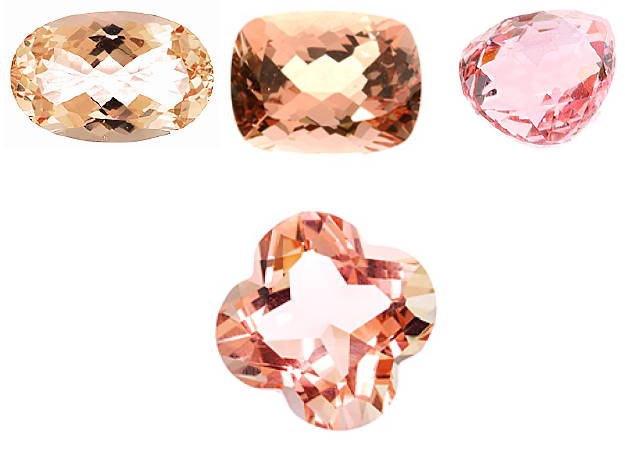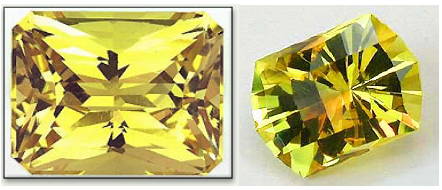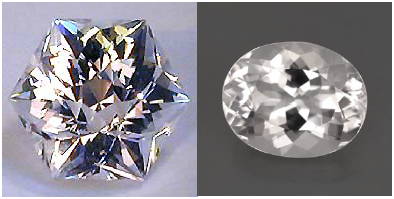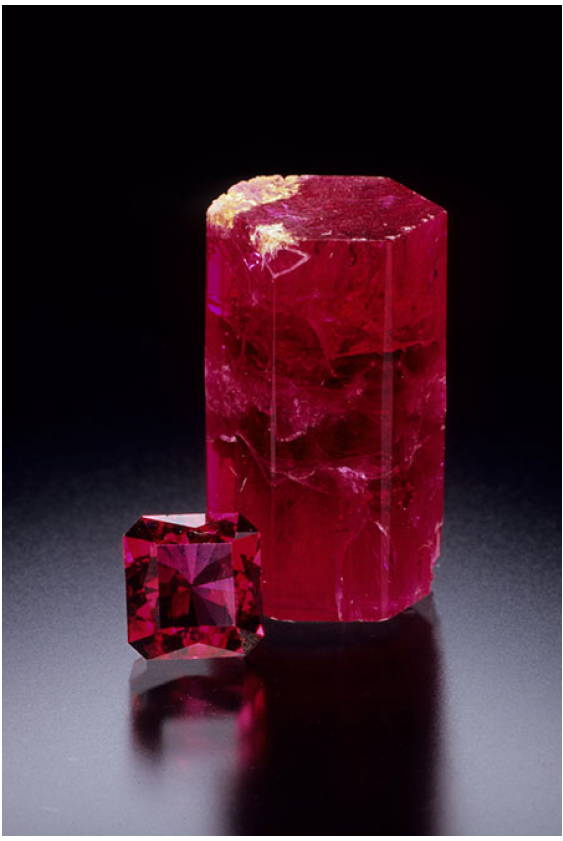Colors: Blue, yellow, red, green, pink, yellowish-green, colorless
Durability: Strong to moderate
Refractive index: 1.56-1.6
Treatment: Cracks filling, irradiation, heating
Hardness: 7.5 to 8
Availability: Depending on the variety: red beryl 1.5 carat (aprox.) and aquamarine several hundreds of carats
Localities: Red Beryl; Utah (u.s.a.), Emeralds; Columbia, Afghanistan, Pakistan, Bahia (Brazil), Other variety also in; Madagascar, Russia and Ukraine
Aquamarine, emerald, and morganite are all beryls – just like golden beryl, yellowish-green heliodor, colorless goshenite, and the rare red beryl.
Whether blue, green, yellow, colorless, or pink, their chemical and physical properties essentially correspond; only in their colors they differ from one another so much.
As pure beryl, they are colorless, but they can account for their structure to store various foreign substances, which gives rise to the numerous colors, turning a plain, colorless gemstone into a green, yellow, pink, or blue treasure.
Iron colors beryl in the most beautiful sea-blue hues, turning it into aquamarine, one of the most popular gems.
This gem not only shines in all the colors of water – fine blue shades which can complement almost any skin or eye color; a slight green shimmer is also one of its typical features.

The emerald is closely related to the aquamarine.
This second most valuable of all the beryls are given the most beautiful, intense, and glowing green imaginable, namely emerald green, by chrome and/or vanadium.
Small crystal inclusions, cracks, or fissures are not merely tolerated in this precious gemstone; they are regarded as features of its identity.
Connaisseurs refer to them affectionately as the Jardin (garden) of the emerald.

Formerly, it was known rather plainly as ‘pink beryl.’
It has only been called morganite since the year 1911, having been so named in honor of the New York finance expert and gemstone collector John Pierpont Morgan.

Small traces of iron, and a natural aura that emanates from minerals containing uranium, are sufficient to give a colorless beryl a more or less intense yellow tone – the typical color of the golden beryl.

Iron and uranium are also responsible for the fresh, stimulating greenish-yellow of another beryl variety, the heliodor.
The name goes with the color very well, being derived from the Greek Helios (sun) and Doron (gift).

Discovered in the late 1970s and still found in gem quality at only one site in the world, the Wah-Wah Mountains of Utah, red beryl, or bixbite, is one of the world’s rarest and most desirable gemstones… as well as the most expensive beryl!
Typically as included as its fellow beryl, emerald, few crystals approach gem quality.
Most specimens of fine crystals are fiercely guarded by mineral collectors and are never faceted.

Fewer than 10,000 stones are cut per year, with more than 95% of those being melee, mostly in lower grades.
In the past, various commercial mining ventures have had sporadic success in producing stones, but a new enterprise, using more modern methods, is doing better.
Red beryl remains one of the most expensive of all colored gems.
In recent years Russian synthetic red beryl has come on the market.

Now and again, beryl is found, which lacks these coloring substances.
In such cases, it simply remains a ‘mere’ colorless beryl.
In the trade, it is often referred to as goshenite after the place where it was initially found, Goshen, in Massachusetts.
Even in ancient times, beryl was used to make glasses.

Initially, the name ‘beryl’ came from India.
It was derived from the Sanskrit word ‘veruliyam’, an old term for the gemstone chrysoberyl, from which the Greek word ‘beryllos’ later developed.
Beryls are popular gems, not only on account of their magnificent colors.
Their appeal also lies in their high brilliance and qualities, such as their hardness (7.5 to 8), which makes them admirably well suited for use in jewelry.
In particular, beryls are well suited to rectangular or square step cuts, since it takes a clear design to bring out the sheer beauty of this colorful gemstone family to the full.
